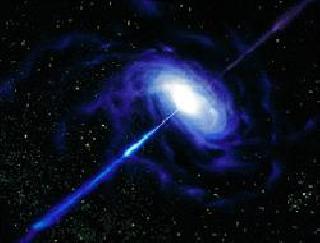
A NASA photo
WASHINGTON (PTI): Researchers have inched closer to solving the longstanding mystery of the origins of cosmic rays which can damage electronics on Earth and put astronauts in space at risk.
The origin of cosmic rays - high-energy particles - in the universe has confounded scientists for decades.
But a study by researchers using data from the IceCube Neutrino Observatory at the South Pole reveals new information that may help unravel the longstanding mystery of exactly how and where these "rays" are produced.
Cosmic rays are known to reach energies above 100 billion giga-electron volts (1011 GeV). The data reported in this latest study cover the energy range from 1.6 times 106 GeV to 109 GeV, researchers said.
Researchers are particularly interested in identifying cosmic rays in this interval because the transition from cosmic rays produced in the Milky Way Galaxy to "extragalactic" cosmic rays, produced outside our galaxy, is expected to occur in this energy range.
Exploding stars called supernovae are among the sources of cosmic rays in the Milky Way, while distant objects such as collapsing massive stars and active galactic nuclei far from the Milky Way are believed to produce the highest energy particles in nature.
University of Delaware physicist Bakhtiyar Ruzybayev points out that the cosmic-ray energy spectrum does not follow a simple power law between the "knee" around 4 PeV (peta-electron volts) and the "ankle" around 4 EeV (exa-electron volts), as previously thought, but exhibits features like hardening around 20 PeV and steepening around 130 PeV.
"The spectrum steepens at the 'knee' which is generally interpreted as the beginning of the end of the galactic population. Below the knee, cosmic rays are galactic in origin, while above that energy, particles from more distant regions in our universe become more and more likely," said Ruzybayev, the study's corresponding author.
"These measurements provide new constraints that must be satisfied by any models that try to explain the acceleration and propagation of cosmic rays," Ruzybayev said.
The research, which draws on data collected by IceTop, the IceCube Observatory's surface array of detectors, is published in the journal Physical Review D.
 Previous Article
Previous Article Next Article
Next Article













The Indian Air Force, in its flight trials evaluation report submitted before the Defence Ministry l..
view articleAn insight into the Medium Multi-Role Combat Aircraft competition...
view articleSky enthusiasts can now spot the International Space Station (ISS) commanded by Indian-American astr..
view article